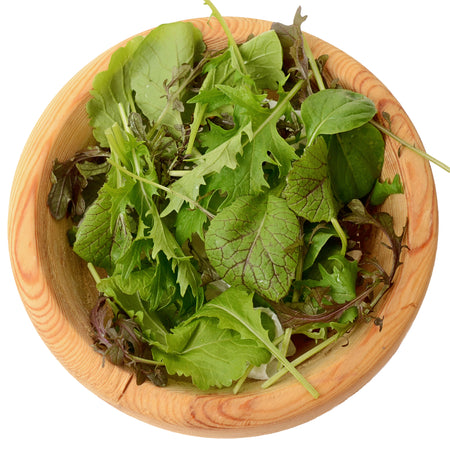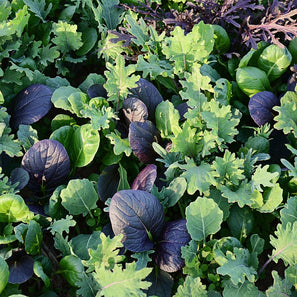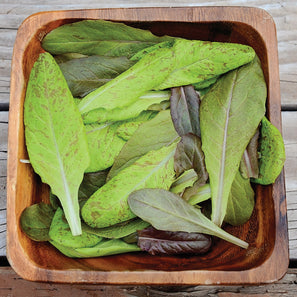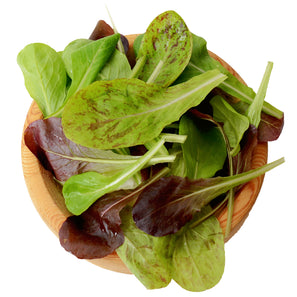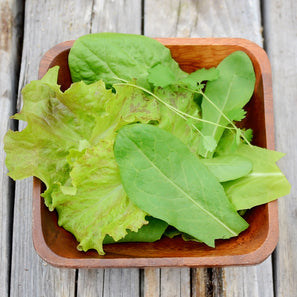ORGANIC MUSTARD MIX
Product Description:
| Soil Temp for Germ | 40–80°F |
| Seed Depth | 40–80°F |
| Seed Spacing | 1" |
| Days to Emergence | 2–15 |
| Thin Plants to | 10–16" |
| Row Spacing | 16–18" |
| Fertilizer Needs | Low |
| Minimum Germination | 80% |
| Seeds per Gram | ≈ 800 |
| Seed Life | 3 years |
Salad mixes are a staple in our daily lives. Colorful varieties of lettuce, chicory, arugula and curly endive are picked for the daily meal. The preferred planting method is to direct seed into a 4 x 4 foot area every 2-3 weeks. There are two ways to harvest the greens. The first is the traditional cut-and-come-again method—if you cut about 2 inches above the ground you will not harm the growing point and the plants will send up new growth. The second method is to pick individual leaves as needed. The best salads are made from young tender leaves. Older, more mature leaves are often more bitter. Four grams will sow a 4 x 4 foot area (with the exception of MS480 Micro Greens Blend — you will need 1 oz to sow a 4 x 4 area).
Days to maturity are calculated from date of direct seeding.
Culture
• Lettuce performs best in cool weather, 60-70°F, and grows in a wide range of soil types
• Plant as early as soil can be worked
• For extended harvest, plant every 2-3 weeks and choose heat tolerant varieties for summer
• A cold frame and cold-hardy varieties can stretch the spring and fall growing season into the winter months
• Apply 1 cup of TSC's Complete fertilizer per 10 row feet, and 1 inch of compost
• Consistent, even watering is critical for best results
Direct Sowing
• Use row cover to improve germination and prevent soil crusting
• Thin as soon as 2-3 true leaves have formed
Transplanting
• Start indoors 4-6 weeks before anticipated transplant date
Insects & Diseases
• Common pests: Aphids and slugs
• Pest control: Strong spray of water for aphids or applications of Pyrethrin; baits, traps, or Cabbage Collars for slugs
Harvest & Storage
• While picking individual leaves helps extend the season somewhat, all eventually become bitter as they begin to bolt
What is pelleted seed?
Seed that has been coated with a clay-based material to form a larger, round shape. This makes planting by hand or mechanical seeder easier and allows for more controlled sowing of small seeds such as carrots or lettuce. All pelleted seed has a National Organic Program (NOP) approved coating.

